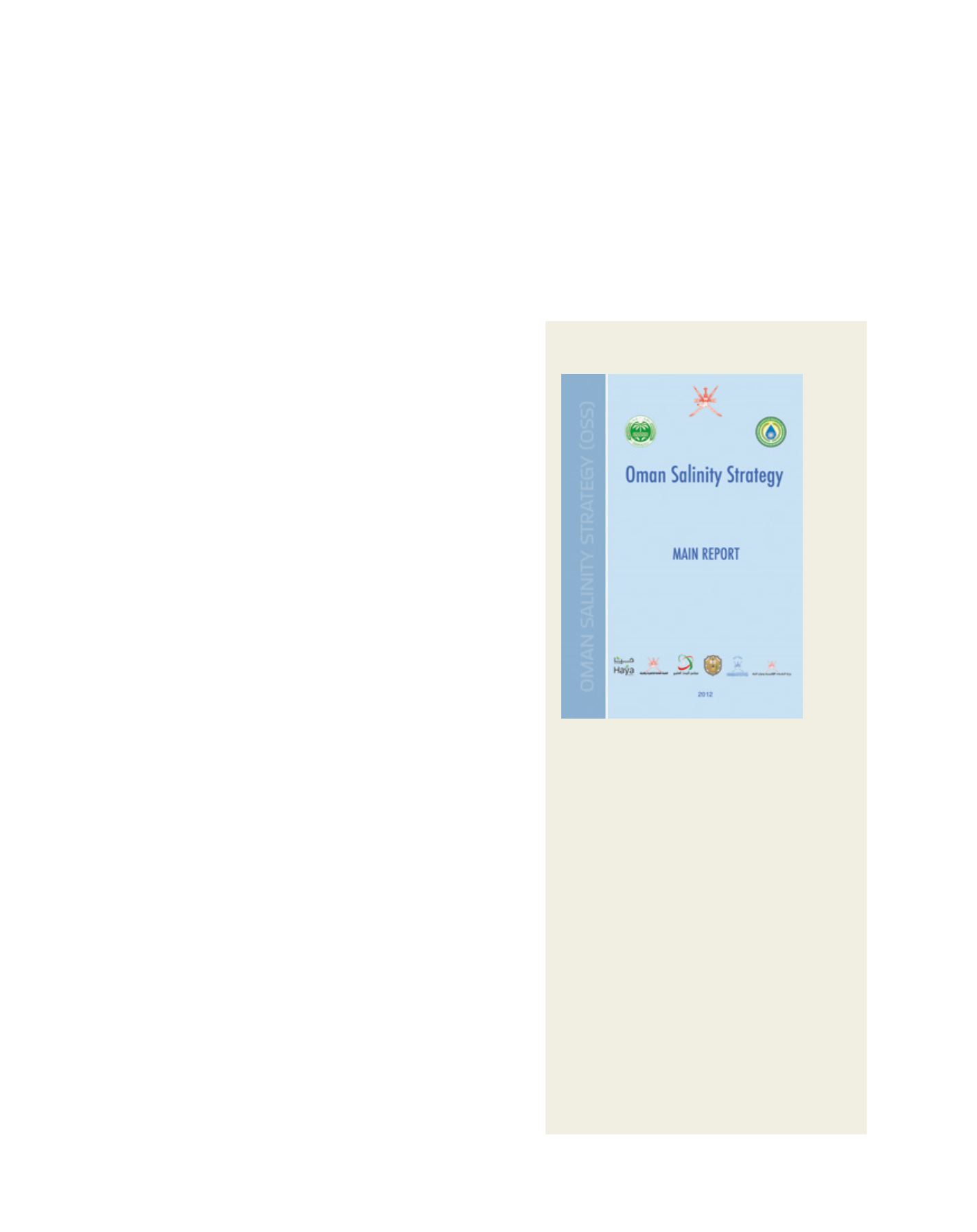

[
] 217
W
ater
C
ooperation
, S
ustainability
and
P
overty
E
radication
and data is one of challenges facing water resources manage-
ment. Under such conditions it is essential to find out what data
already exists, who owns it and how is it stored, and to transform
this into a usable form for decision-making. Integrating soil and
water databases can allow users to view soil and water informa-
tion together. For example, someone interested in identifying
areas best suited for irrigated agriculture can select the data layer
showing the distribution of groundwater quality in the same area.
When such databases are linked with international databases or
with those of other countries that face similar challenges and
have relevant knowledge, their usefulness can be increased. A
good example is the Modeling and Monitoring Agriculture and
Water Resources Development (MAWRED) programme at the
International Center for Biosaline Agriculture (ICBA),
2
which
provides data across national boundaries and provides downscal-
ing to local levels.
In the least developed countries where marginal lands and
water resources are under pressure and agricultural practices
are non-sustainable, there is a strong need to develop, review or
revise soil, water and agricultural policies based on the food and
water demands of an increasing population and the challenges of
climate change. Without good policies across an agroecological
region that may encompass multiple countries and production
systems, it is unlikely that sustainable progress can be made.
Furthermore, even where clear policies do exist, when it comes
to marginal water, these are mostly limited to general standard
guidelines, which are related to heavy metals and pathogens but
not to salts or other minerals.
Water is a shared resource. In order to ensure a future where we
all have access to water and sanitation it is essential that we cooper-
ate. And while it often is the responsibility of government to regulate
land and water use, everyone – including farmers and farming busi-
nesses – has a role to play in managing and using water responsibly
and supporting the public sector.
Many resource-poor farmers are not able to continue profitable
agriculture with low to intermediate levels of inputs and lack of
knowledge. Ameliorative measures require new crops and manage-
ment with new skills and expertise to make it sustainable and
profitable. The necessary know-how originates from the national
and international research and development centres, and has to
move from the research organizations to the relevant ministries and
extension services. Unfortunately, in many countries and regions,
this appears to be the weakest link and new and innovative technol-
ogies do not reach the end users so they can implement appropriate
measures at the right time.
Although scientific research has produced large amounts of
information on water and land management, the linkages between
research and extension are usually weak in most developing
countries. As a consequence, research results are often not based
on extension recommendations, and do not reflect the needs of
farmers. New helpful, appropriate and innovative technologies
must reach farmers soon after release. Partnerships and coopera-
tion with private industry can be very useful. For example, the
widespread availability of mobile telephones, even in poor commu-
nities, provides an opportunity to deliver information and tools.
Such applications are generally developed by the private sector
with the expectation that some income can be made. Partnering
such expertise with technical know-how from extension and
research and with farmers’ knowledge and participation can be
powerful and result in income generation for both
providers and customers within a community. As a
case in point, on-farm research in water productiv-
ity can be conducted using instrumentation or market
information that provides data over the Internet, and
this data can be processed and delivered to farmers
rapidly in a way that is understandable and useful.
Cooperation at many levels is required for success,
but the potential for real and demonstrated income
increases will provide the incentive and interest.
Case study: Combating salinity through
national strategy
The national strategy to combat salinity and protect water
resources from pollution and salinity in Oman was launched
on 2 October 2012 by Sheikh Fadl bin Mohammed
Al Harthy, Secretary-General of the Oman Council of
Ministers. ICBA developed the strategy over a rigorous two-
year process that included five technical teams working
on different aspects: water resources and modelling,
agricultural status and salinity impact, socioeconomic
assessment, governance, legal/regulatory frameworks and
policies, and capacity development. The process included
continuous consultation with key ministries, government
agencies and local and international specialists.
The study indicated that excessive water use is the
prime cause of salinization of agricultural soils. In many
areas water demand exceeded supply, resulting in the
intrusion of saline water into the aquifers. Even when the
groundwater was considered good quality, poor on-farm
management complicated the problems by causing
salinization of the soil. The study recommends alternative
strategies to improve water use and monitoring, soil
management and agricultural production in the different
types of soil and water conditions; strategic options to
reduce seawater intrusion; and tactics (in the short,
medium and long term) to implement solutions across the
Sultanate of Oman.
Oman’s national salinity strategy recommends
alternative ways to improve water use and monitoring,
soil management and agricultural production
Image: ICBA


















